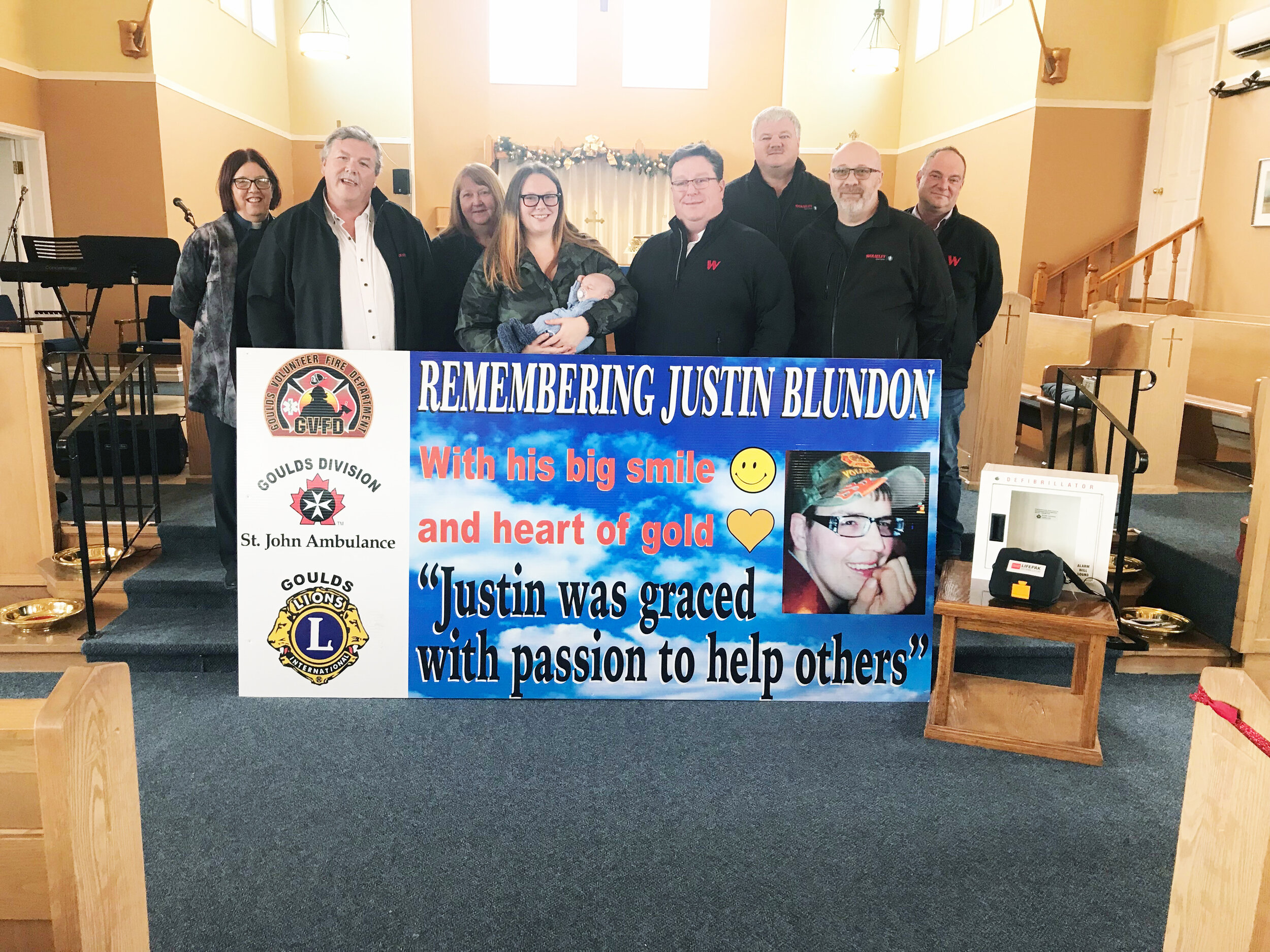The clues keep cropping up, but so too do the mysteries as archaeologists and field staff continue to turn over ground in the search for answers about life in the early years of Sir George Calvert's Colony of Avalon settlement in Ferryland.
Among the excavations into life in the 1620s carried out this past year was further exploration of a mystery building located just outside the confines of what would have been the settlement proper, and the uncovering of what appears to be the main, cobblestone street, of the colony.
Archaeologists presented reports on both projects during the foundation's annual general meeting in Ferryland held November 23.
“As I mentioned at last year's AGM, we've tentatively identified this structure as some sort of special purpose structure, or some sort of proto-industrial building," said the foundation’s chief archaeologist, Dr. Barry Gaulton. “This is based on three specific observations. The first thing you will notice about the building, if you visit the site, is that it is actually located about 30 metres outside the original fortified settlement. All of the other domestic buildings, all of the other work-related buildings are actually located within the area of the colony that is fortified and protected. This building is way outside the parameters of the village, and from a defensive standpoint it seems illogical, but we believe it's located out there to keep it away from the rest of the structures in case of accidental fire."
The second thing that stands out about the structure is how different it is from the others in the Colony. “It suggests to us that this was no dwelling, it was clearly something different," Gaulton said. "Over the last 28 years in Ferryland we've uncovered about a half dozen 17th century houses. They're all rectangular, they all have a wooden floor and they all have one large fireplace or hearth in one part of the building for heating and for cooking. This building is not rectangular, it's a perfect square, 21 by 21 feet on the outside, it doesn't have a wooden floor, it has a simple dirt floor and it doesn't have one hearth, it actually has three separate hearths or fireplace features. And it has an unusually wide four-foot doorway for such a relatively small structure."
By small, Gaulton is referring to the fact the interior of the building would have been only 16 feet by 16 feet, as the early buildings in Ferryland had 2.5 metre thick walls.
The central hearth measures about three feet by five feet with a floor of cobblestones and is beautifully preserved, said Gaulton. "This is where we think was the primary heat source for the building, to heat the structure and to keep it warm throughout the year."
A second hearth is oval shaped and looks like it was a furnace, also made of cobblestones, while the third hearth, located in a southwest corner, "is this really strange purpose-built alcove like feature in which fires were also set," Gaulton said. "This is clearly evident in the form of this thick layer of burnt clay and sand as well as a bricks and char blocks and coal."
The third distinguishing feature is the number and type of byproducts. They suggest there was some early kind of industrial activities undertaken inside, Gaulton said, or experiments to assess such processes. "This is in the form of hundreds and hundreds of pieces of small, green, glassy, bubbly melted kind of byproducts," he explained.
In many cases, it looks like coal was used as the process to create heat for the work.
"Bear in mind, this excavation is incomplete," Gaulton cautioned. "We still have more work to do, we still have to uncover many of the associated refuse deposits. But in terms of what we have so far, we're able to put forth a couple of ideas with regards to the functions of this particular structure. The first idea pertains to attempts at making glass. We know from historical records that at the first English colony in Canada, at Cupids in 1610, they tried to make glass. We also know that in Jamestown (Virginia) in 1608 and again in 1620 the English settlers there attempted to make glass. They did a trial glass industry. Interestingly enough, George Calvert was an investor in the Virginia company, so he was likely aware of all these early attempts in the New World at trying to manufacture glass products."
The crucibles and other byproducts, as well as other materials, such as fragments of ceramic bottles with pewter threaded lids, and specialized glass vials and equipment suggests a second possibility, Gaulton said. "Perhaps this was also, or perhaps exclusively, an alchemist's laboratory," he ventured.
Alchemy is an early form of chemistry in which people tried to turn other metals into gold, or come up with cures for diseases.
"Regardless of the functions this building served in the past, we know it wasn't used for a great deal of time," Gaulton noted.
That's because most of the objects associated with it, such as early 17th century clay tobacco pipes and makers marks on the artefacts found indicate that while it was built and occupied in the 1620s, it was out of use by the 1630s.
"As for why it was dismantled, or tore down in the 1630s, it could have to do with the end products, or the lack thereof, that were produced within, or it could have everything to do with the fact that when David Kirke arrived in 1638, he reorganized and refortified the entire settlement and perhaps this is one of the structures that fell victim to that reorganization and that modification of Ferryland starting in 1638."
Kirk, an English adventurer and trader, became Governor of Newfoundland, and occupied the mansion house at Ferryland, as a reward from the King of England for his having helped capture Quebec in 1629. By that time, Calvert had abandoned the Ferryland colony in favour of setting up one in the more hospitable clime of Chesapeake Bay, Virginia.
"There are a couple of things that are certain about this building," said Gaulton. "There is no mention of it at all in the historic documents, and it's beautifully preserved," said Gaulton. "Archaeologically speaking, it's a really exciting structure and I'm really looking forward to getting back at it again in 2020."
The other interesting project undertaken at Ferryland this past year was the effort, led by archaeologist Eileen Bethune, to learn more about the main street that ran through the colony.
The street itself was only referenced once in correspondence between Calvert and Captain Edward Wynne, the man appointed by Calvert to build the settlement at Ferryland, noted Bethune. The purpose of it is described as 'That the whole may be made a prettie street.'
"It is pretty nice," allow Bethune. "I really like it. It was first uncovered in the mid 1990s."
One large large section that’s been uncovered so far, in the eastern end of the settlement, measures 15 metres long by four metres wide, and was uncovered during work from 1996 to 1998. A second section, some 30 metres long, but only about a metre wide before it is lost under the current road, was found in 1994. That's located in the east end of the settlement.
"So, what I did this summer was start looking at all the different artefacts," said Bethune. "From both ends of the street there are around 20,000."
Her goal was to try to figure out when the street was used, how long it was used and how the residents used it. Based upon the styles of tobacco pipe bowls discovered along the street, Bethune reckoned it started very early in the settlement's history. "I figure they tried to build it for when Calvert (first) visited," she said. "So around 1627-1628, they had a good portion of it done, but not all of it. It definitely continued past the French attack and destruction in 1696. I have some (pipe) bowls extending into the early 1700s on one end of the street."
Bethune also examined ceramics and other materials found on the road. There was also a whole lot of garbage.
"It shows that for the (early) residents of Ferryland, tossing their trash on the street, just out the door, was what they did," she said, adding further research may show whether they pushed the garbage to the side of the street, out of the way, or if they just trampled over it."
Among the trash were drinking bottles and pharmaceutical bottles. The part of the street where the colony's tavern was located is now covered by an asphalt road, so Bethune was unable to glean much about activity that occurred around that site.
"Once I finished with the artefacts, I went outside to try to figure out where they got the materials to build the street," said Bethune.
From what she can tell, the two ends of the street were built slightly differently, but around the same time. The rocks in the eastern end were buried more in sand and easier to walk upon. "Consistently there is seven inches of sand across the entirety of the street for the bedding," Bethune said. "What's really exciting though, was that we found a wooden curb. In the past we found a little bit of the wooden curb, but this past summer when they were digging in a 17th century midden (or garbage pile) we uncovered a nice long, three or four metres of continuous wooden curb that didn't disappear and a series of post moulds holding up the curb around four feet apart, consistently. So from what I can tell from the research, somebody measured it out 13 feet wide, pretty exact, they put in a wooden curb, put up the posts to hold it and laid in seven inches of sand and then two or more stone layers in the sand and then they met somewhere in the middle. I'm not quite sure yet (where they met), of if I will ever know."
But the road was well used, Bethune said. "It definitely was a major thoroughfare. Everyone used it, the animals used it, every day for 80 years," she said. "And during that time, they definitely tossed their trash on it, lost their pipes on it and lots of (other) little bits and pieces as well."




